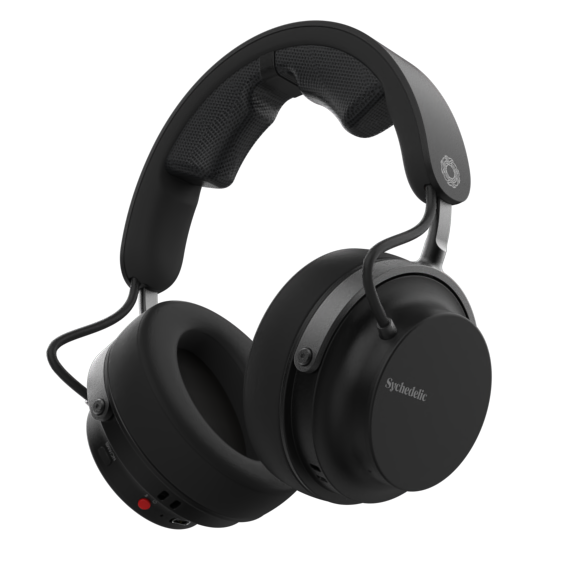Back-to-back meetings.
70+ hour workweeks.
And the pressure to perform consistently.
It’s no surprise that stress and burnout have become part of everyday life.
All for a good cause, right? After all, it’s in pursuit of a stronger, more productive future.
But what if the secret to both productivity and fulfilment at work isn’t grinding harder or doing more - but doing things differently?
Suggested Read: How Hustle Culture is a Productivity Killer
That’s where the flow state in the workplace comes in.
Flow is what happens when you're so immersed in a task that time seems to disappear. And it’s not just about focus.
It’s about a sense of fluidity between your body and mind - where you’re completely absorbed in what you’re doing.
You’re engaged, challenged, and fully in sync with the work.
Flow is often described as “the psychology of optimal experience.” And in today’s hyper-distracted, easily stressed and terribly burnt out world - it’s more essential than ever.
The Flow State: Mastering Focus for Maximum Productivity
Being distracted at work isn’t really a mystery to anyone.
You sit down to start a task and suddenly everything but the task is interesting. You want to chat away with your seat neighbour, you can’t wait for lunch, and a break (as soon as you open Google Docs) sounds sooooo good.
Now imagine the opposite.
You’re working on something that challenges you just enough to keep you on your toes, but not so much that it feels overwhelming. You lose track of time - but not because you were busy not being busy. You're not thinking about an excuse to leave early or having an anxiety attack about your next meeting. You’re just… in it. That’s flow.
The flow state in the workplace is what happens when you're completely immersed in your work, performing at your best without even trying to "force" it. It’s that sweet spot where focus feels natural and work feels meaningful.
Psychologist Mihaly Csikszentmihalyi (yes, it’s a mouthful) identified six characteristics that define the flow experience:
- Intense focus on the present moment
- A merging of action and awareness
- loss of self-consciousness
- A distorted sense of time (not in a “aaah how did time slip out of my hands?!” way)
- A sense of control over the task
- The activity feels intrinsically rewarding
Flow state in the workplace is gaining attention because it helps you do your best work and feel good doing it. Flow state = productivity without the cost of hustling.
Why Flow Matters in the Workplace
Being on top of work all the time is just not plausible. You will hit the occasional (okay, maybe not occasional) Monday blues, or the mid week crash outs, or what we like to call - the “Friday flu(s)” - the magical way some folks tend to fall sick particularly on Fridays.
Don’t get us wrong - we’re not blaming. Because, between the constant context switching, or the pressure to stay “always on,” - it’s easy to feel like you’re running on fumes.
That’s where entering flow state, almost on command makes a difference.
Suggested Read: Find out how to enter flow state on command here
When you’re in flow, your brain isn’t pulled in ten different directions. 20 tasks aren’t fighting for supremacy, and the constant chatter in your brain takes a beat.
You’re deeply focused, mentally clear, and surprisingly energised - even if you’ve been at your desk for hours. And this isn’t just a feel-good idea. There’s science behind it.
Studies suggest that people in flow are up to five times more productive than usual. That’s because flow reduces decision fatigue, blocks distractions, and helps you move through work with natural momentum.
But it’s not just about output. The benefits of flow state go far beyond getting things done faster:
Suggested Read: Cognitive Health and Its Correlation to Longevity
How to Trigger Flow State at Work

What if we told you - you don’t need to finish atleast 100 guided meditations on ‘Headspace’ to get into flow. You can trigger, and gain the benefits of flow state right at your desk, on a random Tuesday - during a meeting or while crafting your next big marketing idea that your boss will shoot down. All it takes is doing a few simple things right.
The key? Designing your workday to support deep focus, and not fight against it.
- Set Clear, Specific Goals
Flow loves clarity. Whether you’re writing a report, coding, or prepping for a big presentation, know exactly what you're trying to accomplish. Clear goals give your brain something to aim for and help keep you engaged.
- Minimise Distractions
This one’s big. Every notification, “just one episode” on work from home days, or quick scroll breaks your momentum. Try turning off alerts, using “Do Not Disturb” mode, or even setting aside certain hours for deep work. Protecting your focus at work is non-negotiable if you want to hit Choose the Right Challenge flow.
- Choose the Right Challenge
Flow happens when your task stretches your skills just enough. So it ensures that it’s not boring, but not overwhelming either. If something feels too easy, raise the stakes. If it feels too hard, break it down into manageable steps.
- Work in Focused Time Blocks
Try time-blocking techniques like Pomodoro (25 minutes on, 5 minutes off) or 90-minute deep work sprints. These help your brain know when it’s time to drop in and when it’s okay to take a break -- triggering flow state and hours of deep focus, while tending to the breaks you’re entitled.
- Create a Flow-Friendly Environment
Whether it’s lo-fi music, a tidy desk, or even a change of scenery, little environmental tweaks can make a big difference. Noise-cancelling smart headphones, good lighting, and a calm workspace all help signal to your brain: it’s time to focus.
Enhancing Flow in the Workplace
While most people experience achieving flow state more naturally, you can actually cater it to your needs with ease. Yeah, sounds like a lab-created thing, except it’s just your mind working for you and not against you.
And no, you don’t need to go to your admin department and demand bean bags and incense as a company purchase (unless your company’s got some excess money and you wanna Gen Z your space up a bit). Often, it’s the small, thoughtful adjustments that make the biggest difference.
1. Your Deep Work Time is Sacred
If someone’s in the zone, a casual “got a sec?” can throw them off completely. Try setting shared “focus hours” where meetings are avoided, and everyone gets uninterrupted time to dive into meaningful tasks.
2. Own it
Owning a house? Not in this economy. But encouraging ownership at work - suuuuper important, and possible - so, win-win?
Let your team decide how they want to approach a task, instead of dictating every step. A little trust goes a long way in triggering that self-driven engagement.
3. Reduce Friction
Nothing breaks flow faster than unnecessary obstacles. Make it easy for your team to move forward without hitting a wall every 10 minutes. So no more “everyone in the conference room” every 5 minutes - you’re not Michael Scott.
4. Pay Attention to Physical Cues
It’s never lighting, noise, temperature, seating. It’s always lightning + noise + temperature + seating.
Some employees might need a quiet space, while others focus better with a playlist in their ears. When people feel physically at ease, their mental focus improves too.
5. Experiment with Tools for Focus
This could be as simple as a timer, a “do not disturb” sign, or productivity-enhancing wearables like Sychedelic headphones. The right tools can enhance focus in minutes.
Leadership’s Role in Building Flow-Friendly Culture
Leaders shape the company. Whether you manage one person in your company or and entire department. You play a huge part in whether flow can actually thrive at work.
Why? Because culture always always always, starts at the top.
That’s why flow state for leaders isn’t just about finding focus for yourself - it’s about creating the conditions where others can enter flow too.
- Give People Ownership
Nobody likes to feel like they are an automated machine for the boss. So, feeling like you own tasks and having some power over your work enables flow. When people feel trusted to make decisions, they’re more likely to engage deeply with their work. As leaders - you must set the direction, but let them choose how to get there.
- Streamline Meetings and Communication
Not every update needs a 30-minute call. The more you reduce unnecessary check-ins, the more space your team has for real focus. Save meetings for collaboration, problem-solving, or creative discussion - places where flow can actually flourish.
- Recognise Flow-Fueled Work
Instead of celebrating who stayed online the latest, recognise great ideas, well-crafted work, or problem-solving that came from flow. It sends a clear message: quality over quantity.
Ultimately, the best leaders understand that creating a flow-friendly culture isn’t just good for morale - it’s good for business.
In fact here’s your new motto: Teams that flow together, grow together.
Signs Your Team Is (or Isn’t) in Flow
Honestly, it’s obvious. As a leader, we know you know when your team is into it and when the team is just not. However, if you need us to spell it out for you…well, we’ll totally do it.
Signs Your Team Is in Flow:
- They seem like they’re on, um, coke: People are energised, even during challenging projects.
- It seems like you might win a Cannes: New ideas and thoughtful solutions come up regularly. They’re super creative with ideation and problem-solving.
- You have to force them to go home: When work feels meaningful, people stick around.
- Smooth momentum: Tasks are progressing without constant nudges or follow-ups.
Signs Your Team Isn’t in Flow:
- They’re doing 100 tasks at once but somehow completing none: People jump between tasks without ever going deep.
- Excuses, excuses, excuses: Work stalls or gets delayed without a clear reason.
- 404 motivation not found: There’s a noticeable drop in energy or interest.
- You need to be a constant presence: Progress only happens during check-ins - not between them.
If your team seems stuck in the second list, it might be time to reassess how your workflows, tools, or culture are blocking flow.
A Flow-Driven Workplace Is a Thriving Workplace
Achieving flow state in the workplace isn’t a productivity hack.
And it’s definitely not just another excuse to hustle harder.
It’s a smarter, more sustainable way to approach your day. One, where you check things off your list without running yourself into the ground. It’s about getting meaningful work done with focus - not by sprinting for 90 days and crashing.
Ready to help yourself or your team access flow on demand?
Click here to book a 20-minute session with Sychedelic and train your brain to enter flow state every day, with ease.
How can employees enter a flow state at work?
Employees can enter flow by creating the right conditions: clear goals, minimal distractions, and a task that’s challenging but manageable. It also helps to time-block work sessions, avoid multitasking, and use environmental cues like music or quiet spaces. Relying on flow increasing devices like Sychedelic Headphones also helps.
FAQs
Can remote workers experience flow?
Definitely. In fact, remote workers often have more control over their environment making it easier to reduce distractions and work in focused blocks.
Is flow state the same as being productive?
Not exactly. Flow often leads to high productivity, but it’s more about how you feel during the work. It’s a state of deep focus, enjoyment, and momentum.
What are signs of being in flow?
You’re completely absorbed, time flies, and everything feels intuitive. You’re challenged but not stressed, and you often finish feeling energised rather than drained.
How long does flow state last?
Flow can last anywhere from 15 minutes to a few hours, depending on the task and your level of focus. It’s normal to move in and out of flow during the day, but with practice, you can stay in it longer and access it more easily over time.
You might also like : (They Designed Your Screens to Ensure You Fall Behind—It’s Working)
Reference
More in Focus








